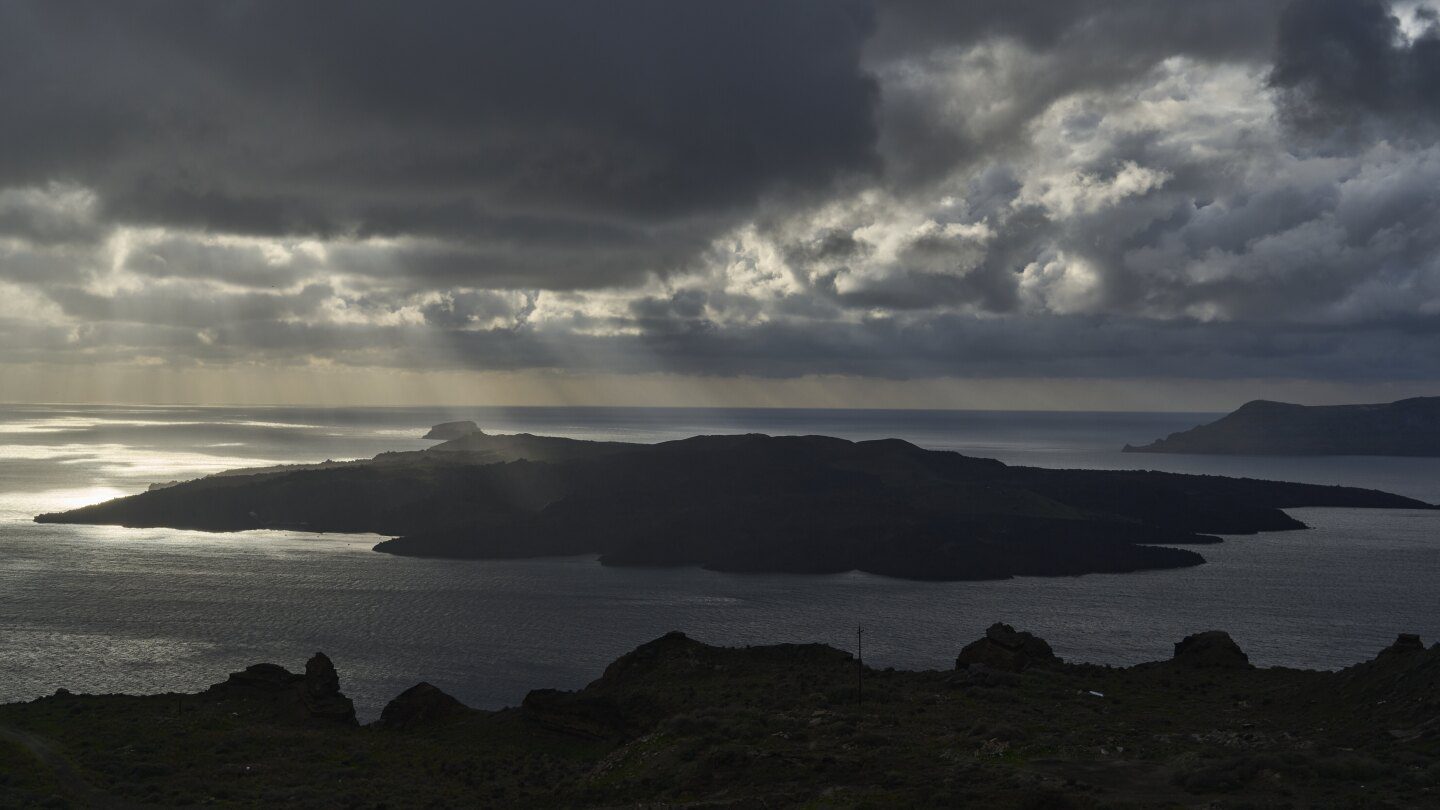
ATHENS, Greece (AP) — Over the past two weeks, scientists have recorded several thousand earthquakes—most of which were minor—in the vicinity of Greece’s volcanic island, Santorini. The University of Athens’ crisis management committee has indicated that a significant earthquake cannot be dismissed as a possibility.
This unusual sequence of seismic activity, which began in late January, has raised concerns among officials. In response, they have declared a state of emergency on Santorini, a popular tourist destination. Authorities have deployed rescue teams equipped with drones and search dogs, as well as put coast guard and navy vessels on standby.
As a precaution, thousands of residents and tourists have evacuated the island, leading to the closure of schools on Santorini and nearby islands for the week. Additional medical personnel, including extra doctors and paramedics, have been deployed to the local hospital, where six disaster medicine teams await further instructions. Medical staff conducted an evacuation drill on Tuesday, simulating an emergency by wheeling out stretchers with individuals posing as patients.
“Preparing our health facilities for natural disasters like earthquakes is crucial,” stated Deputy Health Minister Marios Themistokleous during his visit to the hospital.
Scientists are actively monitoring an earthquake swarm between the islands of Santorini and Amorgos, along with the two nearby volcanoes. They remain uncertain whether these frequent quakes, which range in magnitude from 3 to just above 5, signify a precursor to a larger earthquake or if the area will continue to experience smaller tremors for weeks or months.
Since January 26, approximately 12,000 earthquakes with a magnitude greater than 1 have been documented. Notably, 109 earthquakes were recorded on Monday alone, according to a statement from the National and Kapodistrian University of Athens’ crisis management committee.
Out of the Monday quakes, 13 reached magnitudes exceeding 4, with several more of similar strength registering on Tuesday. The most powerful quake, measured at a magnitude of 5.2, occurred on Monday night, followed by another quake of 5 a couple of hours later.
“The possibility of a larger earthquake occurring remains a concern,” the statement noted.
In light of the ongoing situation, scientists deployed additional monitoring equipment in the region on Tuesday. Seismologists and volcanologists are set to meet with government officials to discuss developments surrounding the seismic activity.
While Greece is situated in a seismically active region and experiences frequent earthquakes, such a concentrated and prolonged series of tremors is uncommon.
Historically, Santorini acquired its crescent shape following an enormous volcanic eruption in antiquity—one of the most significant eruptions recorded in human history. Today, millions flock to the island to marvel at its stunning landscape, characterized by picturesque whitewashed homes and blue-domed churches perched along the caldera rim, which was created by the eruption and subsequent collapse of the volcano.









